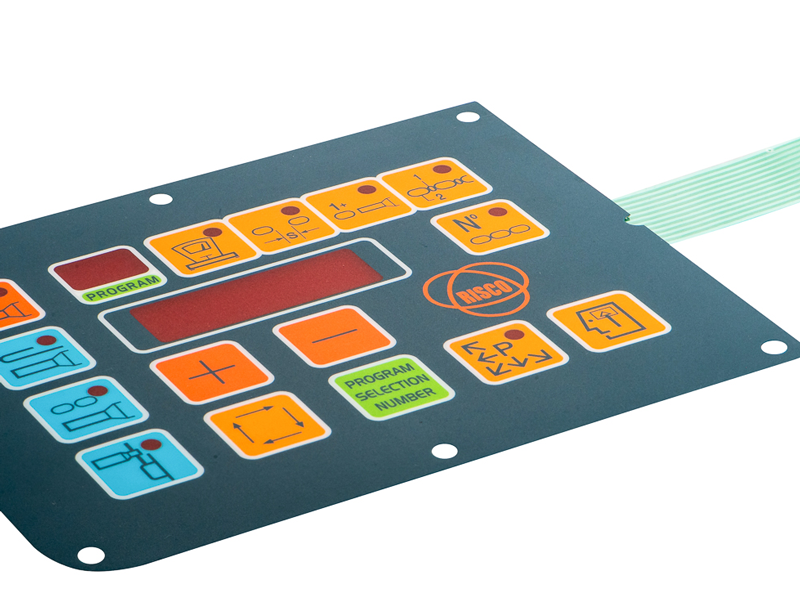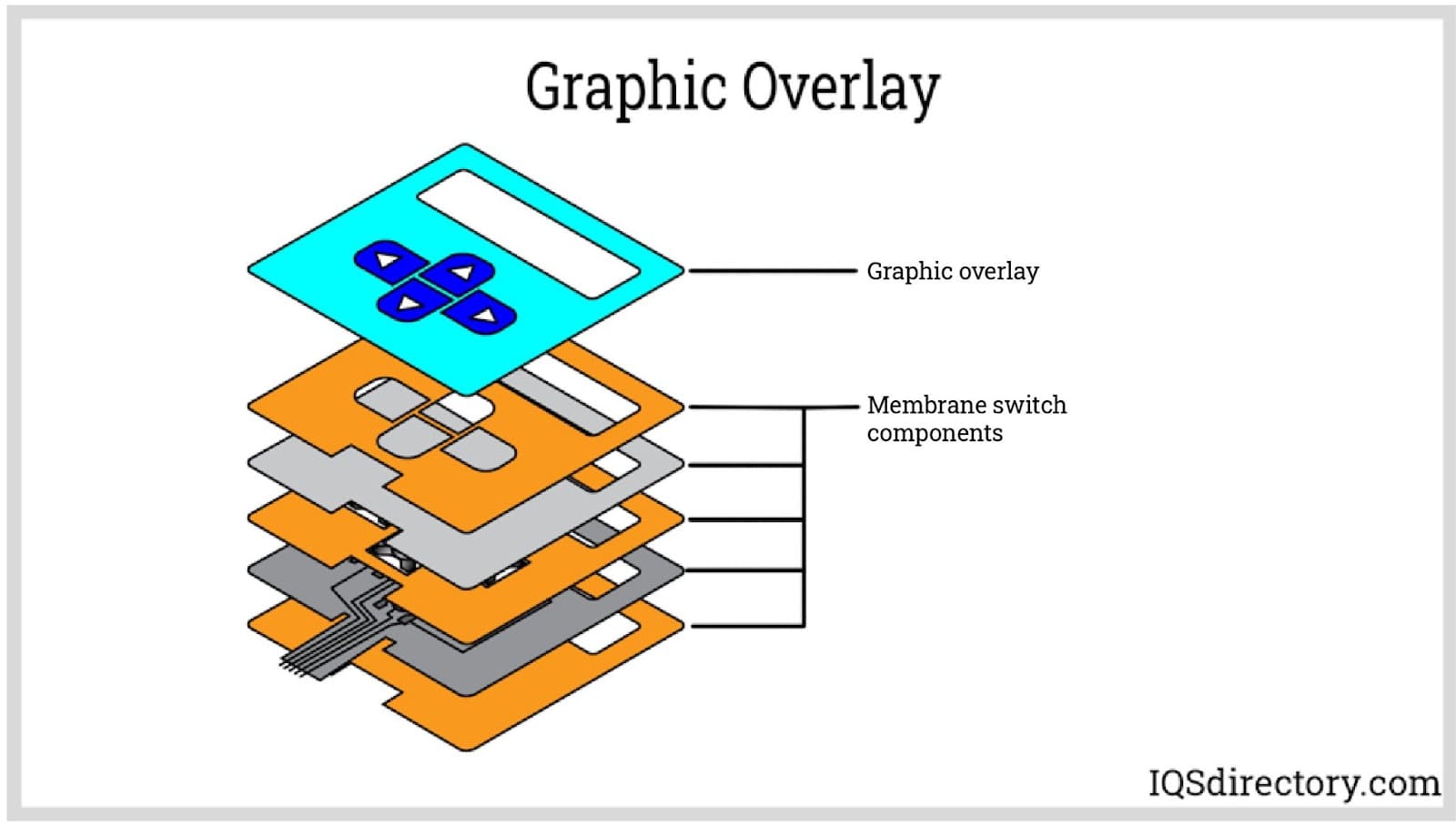Understanding Membrane Switches: The Trick to Dependable and sturdy Controls
Membrane layer switches stand for a vital facet of modern user interface layout, mixing performance with durability in different applications. As we discover the complexities of membrane buttons, it becomes clear that their function in boosting control systems is both intricate and profound, elevating questions regarding exactly how ideal to leverage their abilities in future developments.
What Are Membrane Layer Buttons?
Membrane layer buttons are a sophisticated service in the realm of interface innovation, incorporating capability and design perfectly. These tools act as an interface between users and electronic systems, integrating numerous components into a compact format. Normally created from adaptable, thin layers of materials, membrane switches are designed to reply to touch, enabling individuals to connect with equipment and digital tools properly.
The key aspects of a membrane layer switch consist of a printed circuit layer, visuals overlay, and a spacer layer that stops unexpected activation. The visuals overlay can be tailored to mirror brand name identification or user preferences, boosting aesthetics while making sure use. Membrane switches are generally made use of in different applications, consisting of clinical gadgets, consumer electronic devices, and commercial devices, owing to their toughness and resistance to environmental elements such as moisture and dirt.
One of the vital benefits of membrane buttons is their capacity to stand up to wear and tear, making them perfect for high-traffic atmospheres. Furthermore, they are lightweight and call for very little room, permitting ingenious designs in item development. On the whole, membrane layer switches represent a efficient and sensible option for modern-day digital user interfaces, marrying modern technology with user-centric design concepts.

Exactly How Membrane Switches Job
The procedure of membrane switches rest on a simple yet reliable device that equates user input right into digital signals. These buttons contain numerous layers, commonly consisting of a graphic overlay, a spacer layer, and a circuit layer. When a user presses the switch, the top layer flaws, enabling a conductive element in the circuit layer to make call with a matching conductive pad on the underside of the graphic overlay. This contact shuts the circuit and sends a digital signal to the gadget, indicating that the button has actually been triggered.
The design of membrane buttons can vary, yet they commonly integrate domes or tactile components to offer responses to the user, improving the overall experience. The materials used in membrane buttons, such as polyester or polycarbonate, add to their longevity and resistance to environmental variables, consisting of moisture and dust. In addition, the printed circuits are commonly encapsulated, which secures them from damage over time.

Benefits of Membrane Switches
Among the primary benefits of membrane switches is their versatility in layout, enabling them to be customized to satisfy particular customer requirements and aesthetic requirements. This flexibility prolongs to numerous markets, where various shapes, dimensions, and colors can be employed to improve user interaction and aesthetic appeal.
In addition, membrane switches are known for their durability. Built from durable materials, they are resistant to dirt, moisture, and physical wear, which considerably expands their lifespan contrasted to traditional mechanical switches. This longevity makes them particularly appropriate for high-traffic environments and applications requiring durability.

Furthermore, membrane buttons provide a structured profile, bring about a thinner style that can be incorporated into different devices without including bulk. This function not just enhances the visual appeal however likewise contributes to a more ergonomic product style.

Applications of Membrane Layer Buttons
Versatile and easy to use, membrane layer buttons find applications across a large array of markets, consisting of medical devices, consumer electronic devices, and commercial equipment. In the medical field, these buttons are essential to gadgets such as analysis tools, patient monitoring systems, and infusion pumps, where dependability and simplicity of cleaning are essential. Their capacity to preserve and stand up to severe atmospheres performance makes them excellent for such applications.
In customer electronic devices, membrane layer buttons are made use of in items like microwaves, washing devices, and push-button controls - membrane switch. Their smooth style enables for user-friendly interface, improving the general customer experience while supplying resilience and resistance to use and tear
Industrial equipment also gains from membrane layer buttons, particularly in control panels for equipment and automation systems. These switches provide security against dirt and dampness, guaranteeing regular efficiency in difficult atmospheres. Their customizable attributes allow suppliers to customize them to particular operational demands, improving efficiency and capability.
Choosing the Right Membrane Switch
When choosing a membrane switch, it is essential to take into consideration various aspects that affect performance and viability for specific applications. The main factors to consider include ecological conditions, tactile comments, resilience, and style specifications.
First, analyze the operating environment; switches exposed to dampness, chemicals, or extreme temperatures require particular products to ensure durability and capability. Next off, evaluate the requirement for responsive feedback. Depending upon individual communication, some applications may gain from a responsive response to verify activation, while others might favor a non-tactile design for aesthetic reasons.
Longevity is another vital variable; membrane switches ought to be developed to stand up to constant usage, impacts, and abrasion. Ensure the chosen button can endure the anticipated lifecycle, especially in high-usage circumstances.
Verdict
In conclusion, membrane switches function as necessary parts in the layout of reputable and long lasting control systems across different industries. Their small look at more info style, integrated with robust construction and customizable features, enhances user communication while ensuring long life in requiring link settings. The adaptability of membrane switches allows for customized remedies that fulfill details functional needs, reinforcing their significance in modern-day innovation. membrane switch. As industries remain to evolve, the importance of incorporating reliable membrane button options can not be overstated.
Membrane changes represent an essential aspect of modern-day user interface style, mixing functionality with strength in various applications.Membrane layer buttons are a sophisticated remedy in the world of user interface innovation, incorporating performance and layout seamlessly. Normally constructed from versatile, slim layers of materials, membrane layer switches are developed to react to touch, enabling individuals to engage with equipment and electronic gadgets effectively.
The style of membrane switches can vary, but they frequently integrate domes or responsive components to supply responses to the user, improving the general experience.In verdict, membrane layer switches serve as vital elements in the style of try this out sturdy and dependable control systems throughout numerous sectors.
Comments on “Exploring the Different Types and Features of a Membrane Switch”